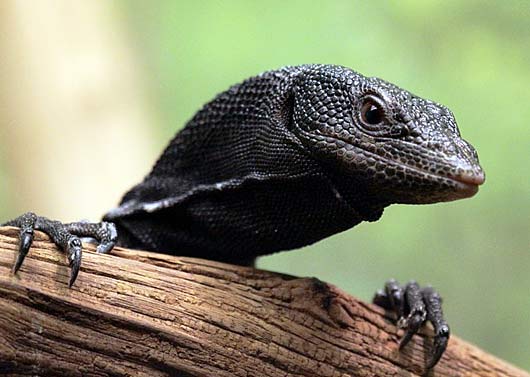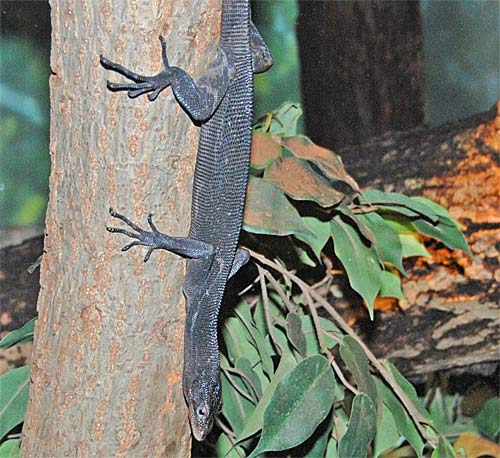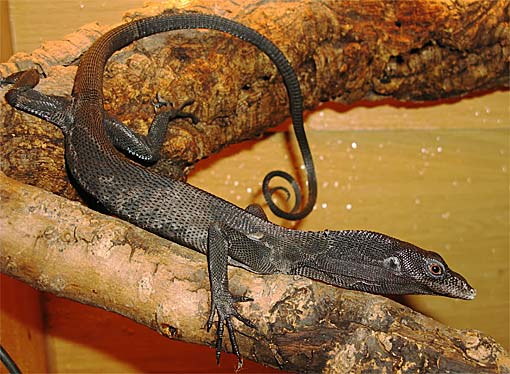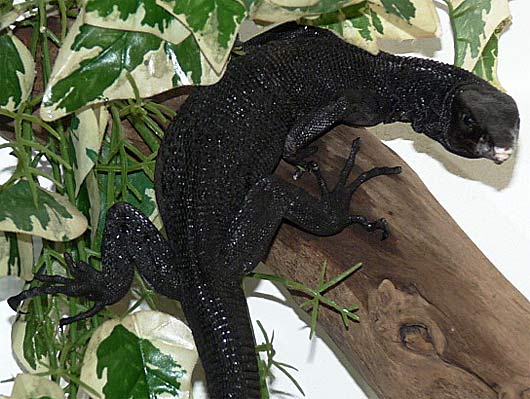Black Tree Monitor – Intelligent but Nervous in New Guinea

Once classified as merely a subspecies of the green tree monitor, the black tree monitor of New Guinea now stands alone, thought of by most interested parties as its own species after a healthy scientific debate. It is also sometimes called the Beccari monitor as it was first encountered by an Italian explorer of that name. The lizard resides in a small area of humid forests and swamps on the Aru Islands just off the coast of New Guinea to the south.

Black tree monitors are handsome, slender, and of purely black coloring. Imagine looking for one in the swamp at night time. Good luck! Hatchlings however, can be born with rows of green or yellow spots but these will soon fade away in a few months. Full-grown the adults will measure up to 37 inches (94 cm), including the tail. The long tail is used to grasp tree branches and support the lizard as it moves around in its favorite habitat, the trees. Well-adapted for tree climbing, the black tree monitor has very long, strong limbs and sharp claws. It will coil its tail when not in use. Up in the trees they enjoy scanning the surroundings with what many describe as an intelligent gaze.
The lizards are known to be skittish and nervous around any type of threat. Wherever they are perched, they may jump down or quickly dive out of site when they see anything remotely threatening. Another tactic they may employ is ejecting a foul-smelling excretion on anything too close to them. When in captivity, they may not eat when being observed, although a few specimens have become more domestic and even search out their keepers when they are ready for food.

In the swamps of New Guinea they live on a diet of crabs, frogs, insects and other small invertebrates.
Females often lay clutches of eggs twice a year. The clutches contain anywhere from two to six eggs and the mother lizards can be quite protective of them.

